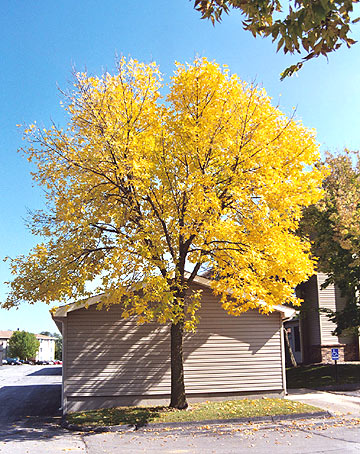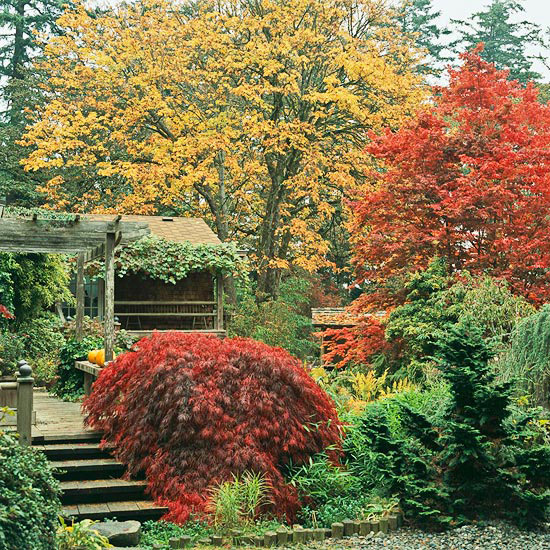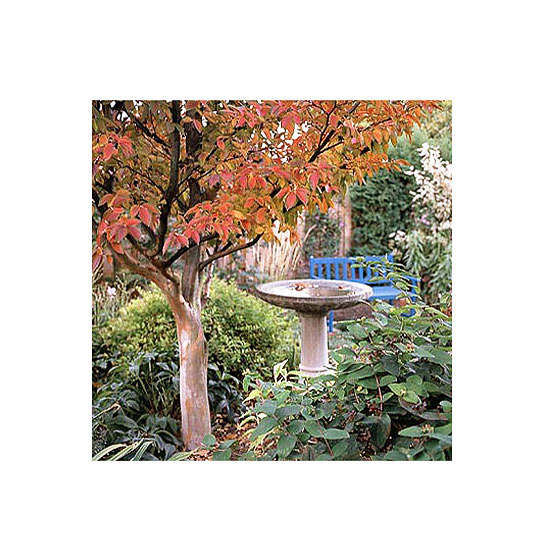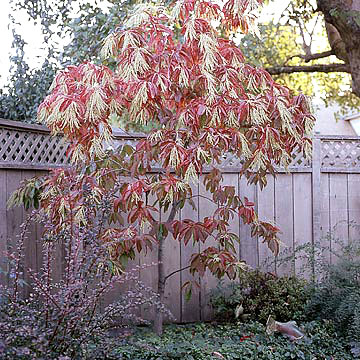





 Green ash.
Green ash.
Trees set the landscape afire each autumn when leaves turn from summer shades of green to flaming hues of red, yellow, and orange. To enjoy this golden season in your yard, plant species that are celebrated for their colorful fall foliage. Use this guide when you go tree shopping at your local nursery.
American folklore credits Jack Frost for autumn foliage color. Actually, this cold, mythical character spoils the show by killing the leaf cells that produce bright hues. The truth is, nature stages the brilliant fall act to prepare trees for winter.
Autumn's shorter days signal trees to stop manufacturing chlorophyll, the dominant, green pigment in leaves during spring and summer. When chlorophyll weakens, other pigments -- such as carotin and anthocyanin -- reveal their blazing colors.
continue reading below
Carotin is responsible for bright yellow and orange autumn hues. Sugar maple, birch, ash, ginkgo, redbud, beech, hickory, butternut, honey locust, linden, pecan, poplar, tuliptree, and walnut offer golden-yellow foliage each fall. For orange foliage, look for yellowwood, Ohio buckeye, and paperbark maple.
The crimson colors on dogwood, swamp maple, amurmaple, sweet gum, hawthorn, sourwood, and oak come from anthocyanin. This red pigment is stimulated by cool nights (below 45 degrees) and warm, sunny days -- a time traditionally known as Indian summer.

Fall color is just one characteristic to keep in mind when you select trees for your yard. Other important considerations include mature size, hardiness, and resistance to insects and diseases. Your own neighborhood and a local arboretum are good places to identify species that grow well in your climate.
Sun and space are the two key needs of trees. Most species require sunlight to grow, so place a new tree where it will not be shaded by buildings or larger trees. Large, spreading trees -- such as oak, maple, and ash -- need at least 65 feet between their trunks. Plant them 30 feet from your house and 10 feet from paved areas to prevent roots from damaging foundations. Columnar trees-such as birch and poplar-can be planted 15 to 20 feet from your home's foundation. Space small trees-such as redbud, serviceberry, and dogwood -- 10 feet apart and 8 feet from a house.
For fall planting, you can buy a containerized or balled-and-burlapped (B&B) tree at a local nursery.To plant a B&B tree, measure the diameter of the root ball with the handle of your shovel. Remove a ring of sod that's at least twice the circumference of the root ball, then set the tree aside. Dig a hole deep enough that the top of the root ball is even with the ground level. When the tree is in place, cut the cord around the root ball. Roll back the burlap, but do not remove it. Refill the hole with soil.
To eliminate air pockets, soak the soil thoroughly. After the water has drained, add more soil. Make a basin for water by encircling the tree with a 3-inch-high ring of soil a foot away from the trunk. Mulch with shredded bark.
Staking and wrapping the trunks of young trees will provide support against strong winter winds and prevent damage from animals. Use two or three evenly spaced stakes around the trunk, and secure the tree with heavy cord just below the lowest branches.
To protect the bark, buy a special tree wrap. Wrap the trunk from the bottom up so there will be no lip that can collect water and cause fungus problems.
The following trees are listed according to the coldest climate in which they will grow. For best results, consult with an expert at a reputable tree nursery before you make final selections for your yard.
 Sourwood
Sourwood
Copyright © www.100flowers.win Botanic Garden All Rights Reserved